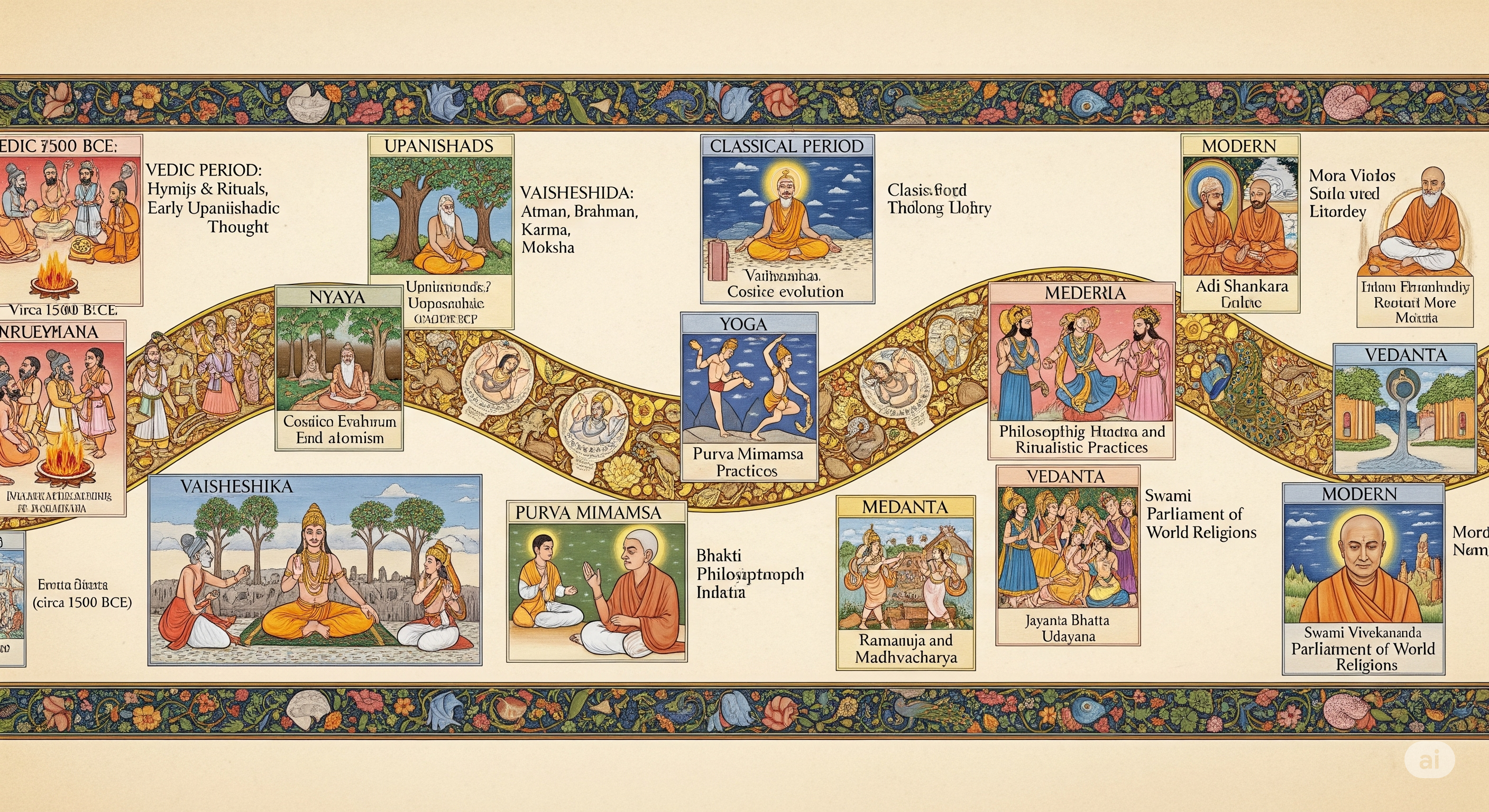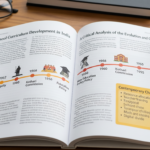
Exploring Our Roots: The Historical Context of Hindu Philosophy
- admin
- August 2, 2025
- culture, Philosophy, World View
- 0 Comments
Tracing the Evolution from Ancient Civilizations to Timeless Teachings
Hindu philosophy, one of the most profound and enduring intellectual traditions in the world, finds its roots in the ancient civilizations of the Indian subcontinent. Its evolution, deeply intertwined with the cultural and historical shifts of the region, reflects a continuum of thought that has shaped not just spirituality but also ethics, governance, and societal structures. From the Indus Valley Civilization to the teachings of the Mahabharata, Hindu philosophy encapsulates a journey of human understanding, adaptation, and transcendence.
This exploration traces the historical context of Hindu philosophy, connecting its ancient origins with its later crystallization in texts and epics that continue to guide humanity.
1. The Indus Valley Civilization: A Spiritual Foundation
- Civilization and Belief Systems: The Indus Valley Civilization (3300–1300 BCE), with major urban centers like Mohenjodaro and Harappa, provides the earliest evidence of organized societal structures and spiritual practices in India.
- Symbolism in Artifacts: Seals depicting yogic postures and deities resembling Shiva (Pashupati) suggest an early emphasis on meditation, asceticism, and harmony with nature.
- Connection to Modern Practices: The sacredness of water, evident in the Great Bath of Mohenjodaro, aligns with later Hindu rituals involving purification and reverence for rivers like the Ganga.
2. The Vedic Age: The Birth of Philosophical Thought
- Introduction of the Vedas: The arrival of the Vedic period (1500–500 BCE) marked the composition of the four Vedas—Rigveda, Yajurveda, Samaveda, and Atharvaveda. These texts laid the foundation of Hindu philosophy, exploring themes of creation, cosmic order (rta), and the interconnectedness of life.
- Early Rituals and Spirituality: Vedic hymns reveal an evolving understanding of the divine, moving from naturalistic worship (Agni, Varuna) to abstract concepts like Brahman (ultimate reality).
- Societal Structures: The concept of dharma began to take shape, guiding individual and collective responsibilities within a dynamic societal framework.
3. Transition to the Upanishads: Seeking the Eternal Truth
- Shift in Focus: The Upanishads (800–200 BCE) represent a philosophical departure from ritualism to introspection. These texts delve into metaphysical questions about the nature of the self (atman), the universe (brahman), and liberation (moksha).
- Timeless Teachings: Concepts like Advaita Vedanta, which emerged from the Upanishads, propose the oneness of all existence, a principle that continues to resonate with spiritual seekers globally.
- Modern Relevance: The Upanishadic emphasis on meditation and self-realization forms the basis of contemporary practices like yoga and mindfulness.
4. The Mahabharata and the Kurukshetra Connection
- The Epic of Dharma: The Mahabharata, composed between 400 BCE and 400 CE, offers a profound exploration of dharma through the epic narrative of the Kurukshetra War.
- The Bhagavad Gita: A philosophical gem within the Mahabharata, the Gita presents Krishna’s counsel to Arjuna on the battlefield, addressing moral dilemmas and the nature of duty, devotion, and liberation.
- Historical Context: The Kurukshetra region, identified with the epic’s setting, remains a symbolic site of dharma and spiritual inquiry. Modern-day Kurukshetra continues to be a hub for philosophical discourse and pilgrimage.
5. The Rise of Philosophical Schools
- Post-Vedic Evolution: The classical period of Hindu philosophy (500 BCE–1000 CE) saw the emergence of six major schools (darshanas), including Nyaya, Vaisheshika, Samkhya, Yoga, Mimamsa, and Vedanta.
- Interplay of Thought: These schools debated diverse aspects of existence, from logic and metaphysics to ethics and epistemology, creating a rich intellectual tradition.
- Global Influence: Concepts from these schools, such as yoga and karma, have transcended cultural boundaries, shaping global discourses on well-being and spirituality.
6. Continuity and Adaptation: Hindu Philosophy Today
- Modern Interpretations: From the teachings of Adi Shankaracharya in the 8th century to Swami Vivekananda’s global outreach in the 19th century, Hindu philosophy has continuously evolved to address changing societal needs.
- Contemporary Practice: Rituals, festivals, and meditative practices rooted in these ancient traditions remain integral to modern Hindu identity, fostering both individual and communal growth.
- Kurukshetra Today: The region has become a center for cultural preservation, hosting annual Gita Mahotsavs and discussions on the relevance of the Bhagavad Gita in modern life.
Conclusion: A Journey of Timeless Relevance
From the spiritual inklings of the Indus Valley to the philosophical depths of the Mahabharata, Hindu philosophy is a testament to humanity’s quest for understanding and transcendence. Its principles, born in ancient civilizations and nurtured through millennia, continue to inspire and guide individuals in a rapidly changing world.
In exploring these roots, we do not merely revisit the past; we rediscover timeless truths that shape our identity and provide a framework for navigating the complexities of life today.

